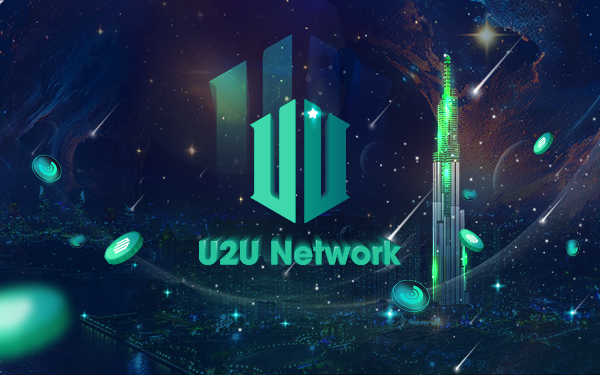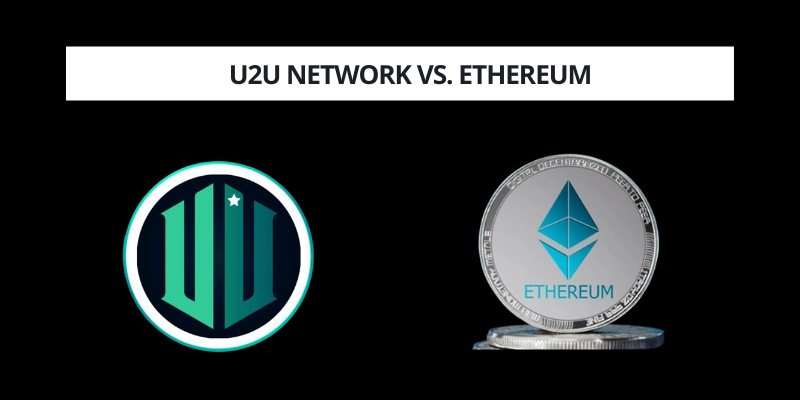The future of decentralized networks like U2U is being shaped by innovative blockchain platforms that challenge the status quo of scalability, speed, and accessibility. Two prominent players in this space are the U2U Network, a Layer-1 blockchain tailored for Decentralized Physical Infrastructure Networks (DePIN), and Ethereum, the pioneering smart contract platform that powers much of Web3.
While Ethereum has long been the backbone of decentralized applications (dApps), U2U Network introduces a novel approach with its Directed Acyclic Graph (DAG) technology and modular architecture. This article compares the two platforms, focusing on their technical frameworks and implications for decentralized networks.
Architectural Foundations
Ethereum operates on a traditional blockchain model, processing transactions sequentially in blocks secured by a Proof of Stake (PoS) consensus mechanism since its 2022 Merge. This structure ensures robust security and decentralization but limits scalability, with Ethereum currently handling 15–25 transactions per second (TPS). Congestion during peak usage often results in high gas fees, posing challenges for cost-sensitive applications.

In contrast, U2U Network leverages a DAG-based architecture, allowing multiple transactions to be processed simultaneously, significantly boosting throughput. Combined with its Helios Consensus protocol—a hybrid of Asynchronous Byzantine Fault Tolerance (aBFT) and Delegated Proof of Stake (DPoS)—U2U achieves up to 17,000 TPS per shard, with a peak of 72,000 TPS in ideal conditions and a transaction finality time of 650 milliseconds. This scalability positions the future of decentralized networks like U2U as a high-performance alternative for applications requiring rapid, low-cost transactions.
Scalability and Modularity
The future of decentralized networks like U2U hinges on overcoming the blockchain trilemma of balancing scalability, security, and decentralization. Ethereum addresses scalability through Layer-2 solutions like Arbitrum and Optimism, which offload transactions to sidechains while relying on Ethereum’s mainnet for security. However, these solutions add complexity and can introduce latency for cross-chain interactions.
U2U Network takes a different approach with its modular subnet technology. Developers can create independent sub-networks tailored to specific use cases, such as IoT or decentralized VPNs (U2DPN), without congesting the mainnet. Each subnet inherits U2U’s security and consensus mechanisms, ensuring consistency while enabling infinite scalability. This modularity makes U2U particularly suited for DePIN applications, where diverse hardware and resource demands require flexible infrastructure.
Consensus and Security
Ethereum’s PoS consensus, implemented post-Merge, relies on validators staking ETH to secure the network. While energy-efficient compared to its former Proof of Work (PoW) model, PoS requires significant stake to participate, potentially limiting decentralization. Security is robust, with Ethereum’s large validator pool and market cap ($450 billion as of April 2025) making attacks costly.
U2U’s Helios Consensus combines aBFT for fault tolerance and DPoS for efficiency, electing trusted validators to process transactions. The inclusion of Trusted Execution Environments (TEE) and sharding further enhances security and scalability. While U2U’s smaller ecosystem (market cap $678,000 as of April 2025) limits its battle-tested resilience compared to Ethereum, its multi-layered security framework is designed to support DePIN’s unique demands.
Interoperability and Developer Accessibility
Both platforms are Ethereum Virtual Machine (EVM)-compatible, allowing developers to deploy Ethereum-based dApps on U2U with minimal adjustments. Ethereum’s vast ecosystem, with thousands of dApps and developer tools, remains unmatched, supported by a global community and standards like ERC-20 and ERC-721.

U2U enhances interoperability through the Inter-Ledger Protocol (ILP), enabling seamless asset transfers across blockchains and traditional financial systems. Its support for SDKs in languages like Python, Rust, and JavaScript lowers the barrier for developers, particularly for DePIN projects requiring integration with physical devices. The future of decentralized networks like U2U lies in this adaptability, fostering innovation in sectors like telecommunications and IoT.
Challenges and Trade-Offs
Ethereum’s primary challenge is its high transaction costs during network congestion, despite Layer-2 improvements. Its established ecosystem, however, ensures unmatched liquidity and developer support. U2U, while offering superior performance, faces adoption hurdles due to its nascent ecosystem and smaller community (1 million users vs. Ethereum’s tens of millions). Regulatory uncertainties around DePIN and node operations also pose risks for U2U’s growth.
A Complementary Future
The future of decentralized networks like U2U does not necessarily involve replacing Ethereum but complementing it. Ethereum excels as a general-purpose blockchain for DeFi, NFTs, and tokenized assets, while U2U’s DAG-based, DePIN-focused architecture targets high-throughput, real-world applications. As one X user noted, “U2U’s sub-650ms transaction speed and EVM compatibility make it a strong contender for DePIN projects”. Together, these platforms could drive a more scalable, interconnected Web3 ecosystem, with Ethereum providing trust and U2U delivering performance.

